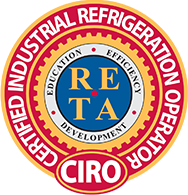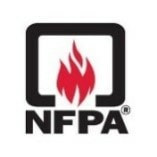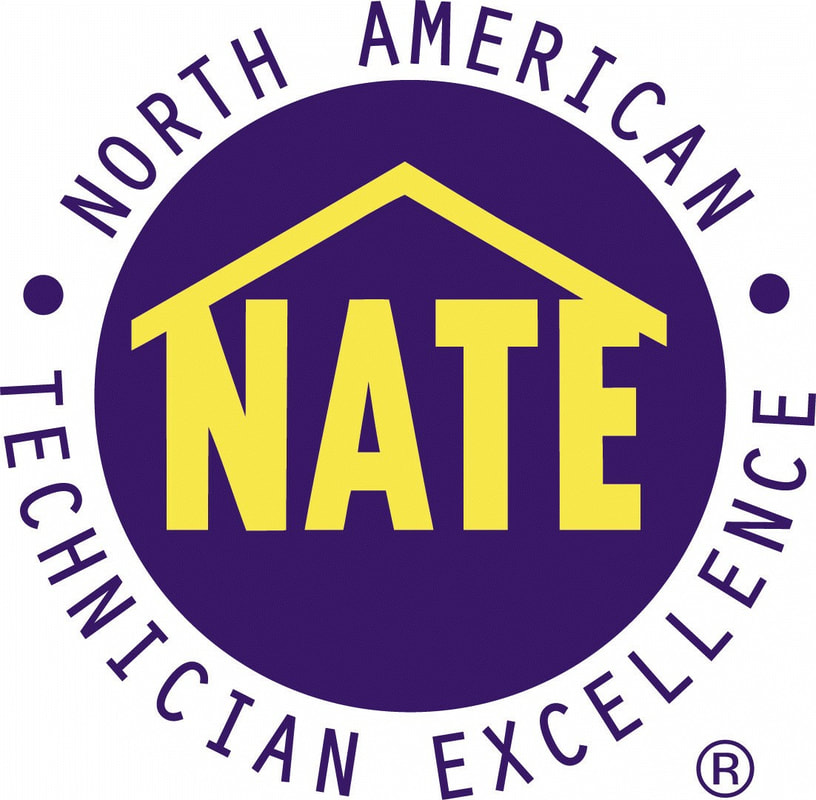
Safety & Emergency Response
Information
Department of Transportation (DOT) Emergency Response Guidebook: The Department of Transportation’s Emergency Response Guide is an essential component of Emergency Response Training. It contains information vital to Emergency Responders, including information on coordination of decontamination and safe distance when working with different chemical releases. We recommend keeping a copy with your emergency response gear.
NIOSHA Pocket
Guide: The NIOSH Pocket Guide is an essential component of Emergency
Response Training. It contains information vital to Emergency Responders
including information on hundreds of potentially harmful chemicals. We recommend
keeping a copy with your emergency response gear.
Emergency Planning and Response Glossary: Wagner-Meinert, LLC has compiled this listing of Emergency Response Terms and definitions for
multiple sources. These terms are common throughout the Emergency Response
Industry. This information has been provided for download in the hope that it
will be used during Emergency Response Training.
Reporter’s Log
Checklist: The Reporter’s Log focuses on common items used by each Emergency
Response Officer as well as incident reporting. This checklist is based on a
checklist originally developed by the International Institute of Ammonia
Refrigeration (IIAR). This information has been modified and expanded by
Wagner-Meinert, Inc. through years of practical use in training and incident
management. Wagner-Meinert, Inc. utilizes this checklist as part of our
Emergency Response Incident Commander’s training course.
Security Officer’s Checklist:
The Security Officer’s Checklist focuses on establishing and maintaining Site
security during an incident as well as coordination of offsite responders. This
checklist is based on documentation originally developed by the International
Institute of Ammonia Refrigeration (IIAR). This information has been modified
and expanded by Wagner-Meinert, Inc. through years of practical use in training
and incident management. Wagner-Meinert, LLC utilizes this checklist as part of
our Emergency Response Incident Commander’s training course.
Decontamination
Officer’s Checklist: The Decontamination Officer’s Checklist focuses on the
establishment and operation of the Decontamination Station. This checklist is
based on a checklist originally developed by the International Institute of
Ammonia Refrigeration (IIAR). This information has been modified and expanded by
Wagner-Meinert, Inc. through years of practical use in training and incident
management. Wagner-Meinert, LLC utilizes this checklist as part of our
Emergency Response Incident Commander’s training course.
Safety
Officer’s Checklist: The Safety Officer’s Checklist focuses on Personnel
Safety as well as Personal Protective Equipment. This checklist is based on
documentation originally developed by the International Institute of Ammonia
Refrigeration (IIAR). This information has been modified and expanded by
Wagner-Meinert, Inc. through years of practical use in training and incident
management. Wagner-Meinert, Inc. utilizes this checklist as part of our
Emergency Response Incident Commander’s training course.
Incident
Commander's Checklist: The Incident Commander’s Checklist focuses on overall
site assessment, coordination, and resource allocation. This checklist is based
on documentation originally developed by the International Institute of Ammonia
Refrigeration (IIAR). This information has been modified and expanded by
Wagner-Meinert, Inc. through years of practical use in training and incident
management. Wagner-Meinert, Inc. utilizes this checklist as part of our
Emergency Response Incident Commander’s training course.
Emergency Response Plan
Assessment Form: Each time the Emergency Response Team assemblies, either
for an incident or drill, the actions of the team should be assessed to
determine if any areas can be improved. This form provides a few quick questions
to assess the operation of the team. Wagner-Meinert, Inc. utilizes this
checklist as part of our Emergency Response Incident Commander’s training
course.
CPL 2-2.59A
- Inspection Procedures for the Hazardous Waste Operations and Emergency
Response Standard, 29 CFR 1910.120 and 1926.65, Paragraph (q): Emergency
Response to Hazardous Substance Releases: CPL documents are the guidance
documents used by OSHA inspectors when inspecting programs. This document is
used to check compliance of Emergency Response Programs. It can be used by
facility personnel to check their program against the minimum standards
established by OSHA. Additionally, owners of Ammonia Refrigeration or other
Industrial Refrigeration systems can utilize this document in their Ammonia
Training classes for their Emergency Responders.
Process Safety Management - OSHA
Ammonia MSDS (Material Safety Data Sheet): Airgas has compiled
this ammonia Safety Data Sheet. This MSDS is ideal for inclusion in Ammonia
Training. Whether it is Emergency Response Training or safety training for
anyone in the ammonia refrigeration or industrial refrigeration fields. The MSDS
contains information on ammonia as a chemical, as well as procedures on dealing
with ammonia exposures. Ammonia safety is vitally important. We encourage you to
make use of this information.
Anhydrous Ammonia Safety: Airgas has compiled this pamphlet
concerning ammonia safety. Chapters include: A Basic Understanding, Common
Hazards, Other Hazards, Thermal Expansion, Human Physiological Effects, Exposure
Limits, Personal Protective Equipment, Emergency Protective And Safety
Equipment, Emergency Measures, Employee Safety Training, And Safety References
And Training Aids. This pamphlet is ideal for inclusion in Ammonia Training.
Whether it is Emergency Response Training or safety training for anyone in the
ammonia refrigeration or industrial refrigeration fields. Ammonia safety is
vitally important. We encourage you to make use of this information.
CPL 2-2.45A - Process Safety Management of Highly Hazardous
Chemicals -- Compliance Guidelines and Enforcement Procedures: CPL documents
are the guidance documents used by OSHA inspectors when inspecting programs.
This document is used to check compliance of Process Safety Management Programs.
It can be used by facility personnel to check their program against the minimum
standards established by OSHA. Additionally, owners of ammonia refrigeration or
other industrial refrigeration systems can utilize this document in their
ammonia training classes for their management personnel.
Risk Management Planning - EPA
On-Site Risk Management Audit Checklist for Program Level 3
Process (Ohio EPA): This checklist is utilized by compliance officers from
the Ohio EPA. This checklist is ideally utilized to check compliance before an
audit. Any operator of an Ammonia Refrigeration System in the state of Ohio
containing over 10,000 pounds of ammonia refrigerant should be in compliance
with this document.
Guidance For Implementation Of The General Duty Clause Clean Air Act Section 112(r)(1): A 55 page document explaining the 2 paragraphs that is the General Duty Clause. The General Duty Clause was originally used to mandate industry consensus standards. Every operator of an Ammonia Refrigeration System should be aware of the obligations they have (as outlined in this document).
Risk Management Plan - RMP Audit
Program: This document provides a quick overview of the audit process used
by the EPA to verify the compliance of EPA’s Risk Management Plans (RMP’s). The
audit requirements are found in 40 CFR 68.220.
Changes to the Chemical Accident Prevention Rule (Risk Management Program) in 2004: This information bulletin was issued by the Environmental Protection Agency (EPA). It outlines the revisions to the Risk Management rule prior to the 2004 submissions. Many facilities failed to account for these changes when they resubmitted in 2004. All facilities should verify compliance with the changes prior to their 2009 submittal.
GDC Inspection Checklist: The General Duty Clause (GDC) of §112(r)(1) establishes that owners and operators of stationary sources producing, processing, and storing extremely hazardous substances have a general duty to identify hazards associated with an accidental release, design and maintain a safe facility, and minimize consequences of any accidental releases that occur.
Industry Information
Wagner-Meinert LLC Pipe Painting Specification: Shortly after our founding, Dennis Meinert
worked with our engineers to develop our first pipe painting color scheme. This
scheme is useful when painting ammonia piping or when touching up those pipes
painted by Wagner-Meinert, LLC during installation.
Lockout / Tagout
Tier II Reporting
Tier II filings are part of SARA Title III or Emergency Planning and Community Right-To-Know Act, called EPCRA. If you have any of the listed chemicals in more than the listed Threshold Quantity (TQ) you must declare the amount of chemicals you have on site. Note that the TQ for ammonia is 500 Lbs. If you do not currently exceed the threshold amount but do so in the future, you have 90 days to report that change. You need to verify your inventory every year, typically by March 1.
For General information on each state requirement to the EPA web site:
http://www.epa.gov/OEM/content/epcra/statetier2.htm
Indiana does not utilize the standard Tier2 submit program. Use the web site below.
Tier II Administration: Indiana Department of Environmental Management
Phone: 317-233-0066
E-Mail: [email protected]
Website: http://www.in.gov/idem/
Ohio
Tier II Administration: Ohio Environmental Protection Agency
Phone: (614) 644-2269
E-Mail: [email protected]
Website: http://www.epa.state.oh.us/dapc/serc
Michigan
Tier II Administration: Michigan Department of Environmental Quality
Phone: (517) 373-8481
Website: http://www.michigan.gov/deqsara
For General information on each state requirement to the EPA web site:
http://www.epa.gov/OEM/content/epcra/statetier2.htm
Indiana does not utilize the standard Tier2 submit program. Use the web site below.
Tier II Administration: Indiana Department of Environmental Management
Phone: 317-233-0066
E-Mail: [email protected]
Website: http://www.in.gov/idem/
Ohio
Tier II Administration: Ohio Environmental Protection Agency
Phone: (614) 644-2269
E-Mail: [email protected]
Website: http://www.epa.state.oh.us/dapc/serc
Michigan
Tier II Administration: Michigan Department of Environmental Quality
Phone: (517) 373-8481
Website: http://www.michigan.gov/deqsara










